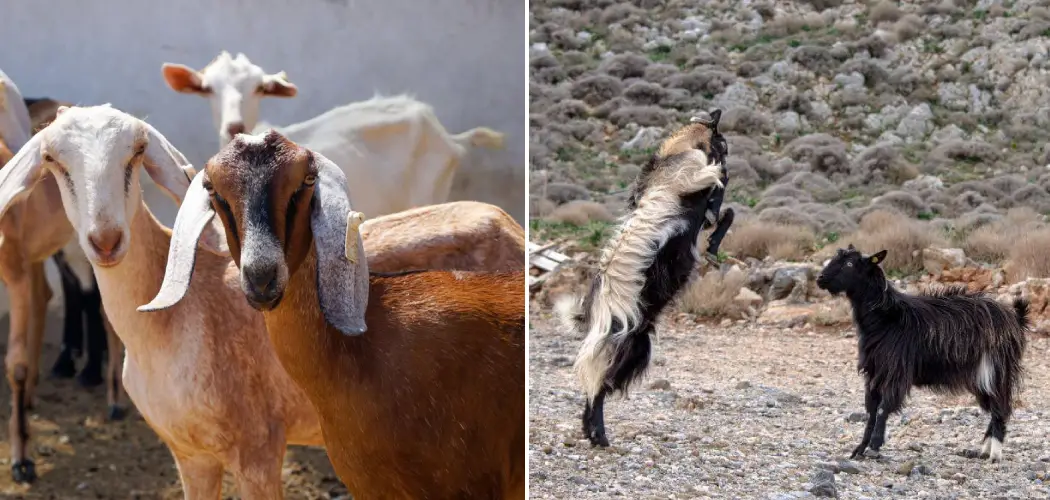Bullying behavior among goats can disrupt the peace and productivity of any herd, leading to stress, injury, and even decreased milk production. Understanding how to stop goats bullying is crucial for any goat keeper aiming to foster a harmonious and healthy environment.
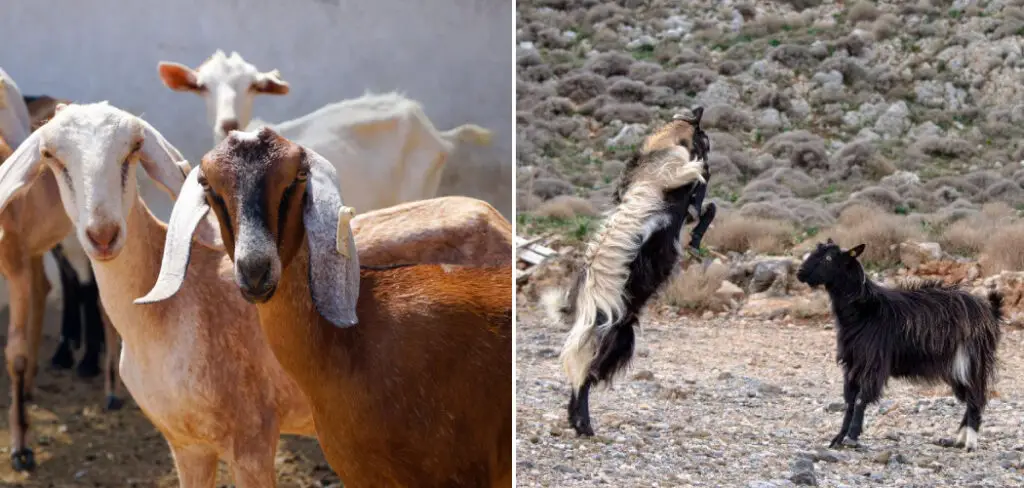
This guide outlines effective strategies and techniques to prevent such behavior, emphasizing the importance of addressing the root causes of aggression and competition among goats.
By promoting positive interactions and minimizing stressors, keepers can ensure their goats coexist peacefully, benefiting the overall well-being of the herd. Through a combination of environmental management, behavioral training, and routine care, this guide will help you create a more orderly and stress-free setting for your goats.
Understand Goat Behavior
Understanding goat behavior is essential in managing and preventing bullying within herds. Goats are inherently social creatures that establish dominance hierarchies to maintain order and peace within their groups. This section will explore the aspects of goat behavior that are critical in addressing bullying effectively.
A. Social Hierarchy
Goats naturally form social hierarchies, which are crucial in herd dynamics. Recognizing and respecting these hierarchies can prevent many bullying issues. Dominant goats often assert their position through various behaviors, including physical actions and assertive posturing.
Understanding this natural tendency allows keepers to intervene less intrusively, minimizing disruptions and respecting the goats’ inherent social structures. Managing the herd in a way that acknowledges these hierarchies can reduce stress and aggression, promoting a more harmonious environment.
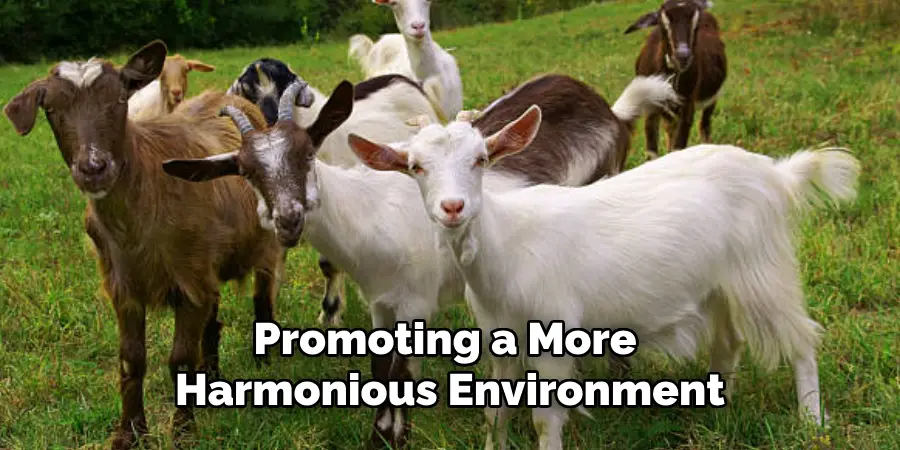
B. Communication Signals
Goat communication is complex, involving a range of vocalizations and body language cues. Bullying or aggressive behavior often starts with subtle signs, such as head-butting, biting, or persistent chasing.
Keepers can identify and mitigate aggressive behavior by closely observing these communication signals early on. Learning to interpret such signals is crucial in maintaining peace within the herd and ensuring the well-being of all goats, especially those who may be more submissive or vulnerable to bullying.
C. Individual Differences
Each goat has unique personality traits and temperaments, influencing how it interacts with the herd. Recognizing these individual differences is key to managing social dynamics effectively. Some goats may naturally be more dominant or aggressive, while others are more passive or submissive. Understanding these nuances allows for better integration and social management strategies, reducing the likelihood of bullying.
Adjusting the herd composition based on compatibility and individual personality traits can lead to more stable and peaceful herd dynamics, ensuring a healthier and happier environment for all goats.
How to Stop Goats Bullying: Provide Adequate Space
Ensuring that goats have adequate space prevents bullying and promotes a peaceful herd environment. Sufficient space allows goats to express natural behaviors, reduces competition for resources, and minimizes the chances of stressful encounters that can lead to aggressive behaviors.
A. Ensure Sufficient Grazing Area
Allocating ample grazing space is essential in reducing competition for food, a common trigger for aggressive behavior among goats. Inadequate grazing areas force goats into close competition, heightening stress and leading to bullying as they fight for access to limited resources. Providing a generous amount of grazing land prevents such conflicts and promotes better health and nutrition for the herd.
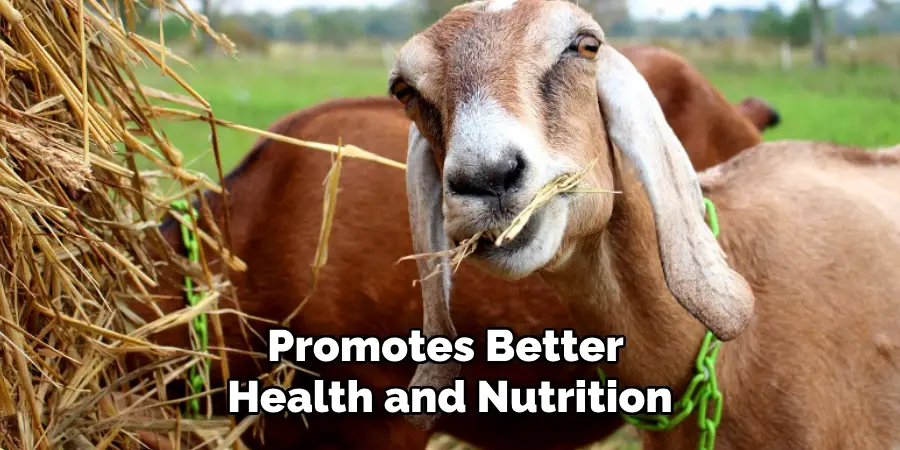
B. Shelter and Rest Areas
Providing multiple shelters and rest areas within the enclosure enables goats to retreat and avoid conflict when necessary. These spaces offer goats a sense of security and personal space, which is especially important for those lower in the social hierarchy or those needing rest. Shelters should be plentiful and spread out to prevent dominance of these areas by more aggressive individuals, ensuring all goats have equal access to comfort and safety.
C. Avoid Overcrowding
Maintaining a balanced herd size is key to preventing overcrowding, significantly increasing goats’ stress and aggression. Overcrowded conditions limit access to essential resources like food, water, and resting spots, exacerbating competition and conflict within the herd.
By ensuring the herd size does not exceed the capacity of the available space and resources, goat keepers can minimize stress and create a more harmonious environment conducive to the well-being of each goat.
By addressing these critical aspects of space provision, goat keepers can significantly reduce the occurrence of bullying and aggression in their herds, ensuring a peaceful, stress-free, and harmonious living environment for all goats.
How to Stop Goats Bullying: Establish Multiple Feeding Stations
Creating a peaceful environment within a goat herd extends significantly into how and where they are fed. Establishing multiple feeding stations can be a pivotal strategy in minimizing bullying and aggressive competition for food. This section will detail the practical steps to effectively implement this strategy.
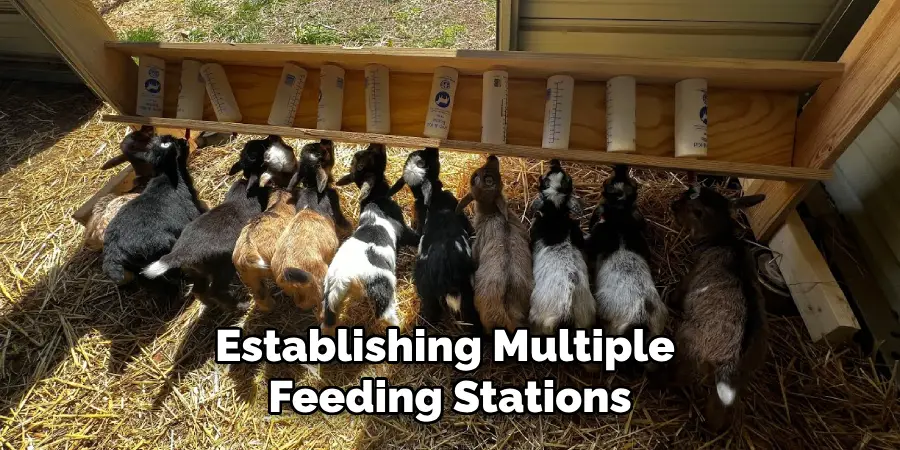
A. Spread Out Feeding Stations
Spreading out feeding stations throughout the enclosure is critical in preventing crowding and competition during meal times. By distributing feeders evenly and ensuring they are sufficiently apart from each other, goats can eat in smaller, more manageable groups.
This arrangement significantly reduces the stress associated with feeding times and decreases the likelihood of dominant goats monopolizing the food supply. Ideally, feeding stations should be positioned far enough apart to give goats the space they need yet within sight of each other to maintain the cohesion of the herd.
B. Provide Sufficient Feed
Ensuring that each goat receives adequate feed is crucial to minimize competition and reduce bullying over food. The quantity of feed provided at each station should account for the number of goats expected to eat from it, with a slight surplus to accommodate for individual differences in appetite and eating speed.
Regular evaluations of the goats’ health and body condition can help determine if adjustments need to be made to the amount of feed provided. A balanced approach, offering both quantity and quality of feed, ensures all goats have equal opportunity to eat well, promoting harmony and reducing aggressive behaviors driven by food scarcity.
C. Monitor Feeding Behavior
Closely observing goat behavior during feeding times allows keepers to promptly address any signs of aggression or intimidation. Early identification of conflicts or bullying at feeding stations can lead to immediate interventions, such as rearranging the stations or adjusting the amount of feed. Monitoring also helps in understanding the herd’s social dynamics and identifying any hierarchy changes that could influence feeding behavior.
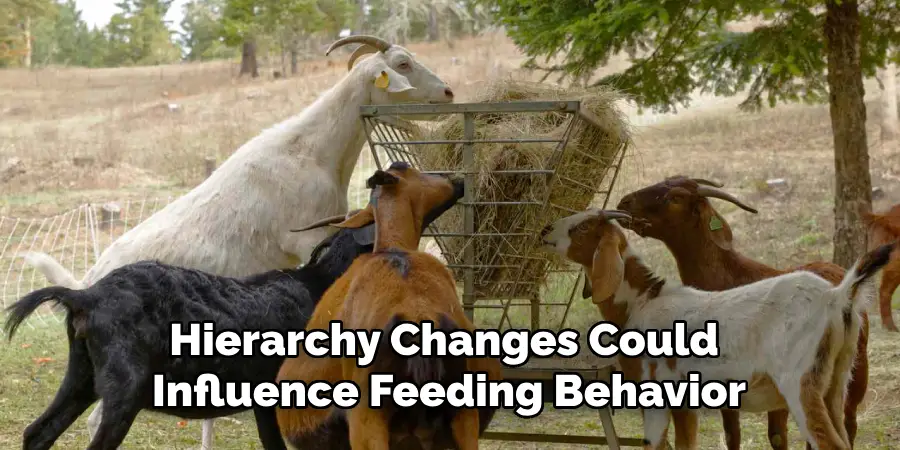
This proactive approach ensures peace during meals and contributes to the overall management of the herd’s social structure.
By implementing multiple feeding stations that are spread out and adequately stocked, goat keepers can significantly alleviate food-related competition and aggression.
The key lies in the careful planning of the stations’ layout, ensuring all goats have access to the nutrition they need, and vigilant observation of the herd’s behavior during feeding times. This comprehensive approach fosters a more orderly, peaceful environment, directly contributing to the well-being and productivity of the goat herd.
Encourage Positive Social Interactions
Encouraging positive social interactions among goats within a herd is vital for maintaining a harmonious and stress-free environment. Strategies focused on gradually introducing new members, compatible grouping, and providing enrichment activities significantly foster positive behaviors and relationships.
A. Introduce New Goats Gradually
Introducing new goats to an existing herd should be executed slowly and carefully. This gradual introduction helps minimize stress and reduce the likelihood of bullying, as it gives the new and resident goats time to adjust to each other. Initial meetings should be conducted in neutral spaces where neither group has established territories.
Using partitioned areas that allow visual and limited physical contact can help the goats get acquainted without the risk of aggressive encounters. Over time, supervised interactions in larger, common areas can facilitate the integration process as the goats become more familiar with each other.
B. Group Compatibly
Grouping goats together based on compatibility and social dynamics is critical for fostering positive relationships within the herd. Observing the goats’ interactions can help identify compatible groups, which can then be segregated to minimize tension.
Compatibility can depend on various factors, including age, size, temperament, and social ranking. Goats that display similar levels of activity and sociability are more likely to form cohesive subgroups within the larger herd, promoting a peaceful coexistence.
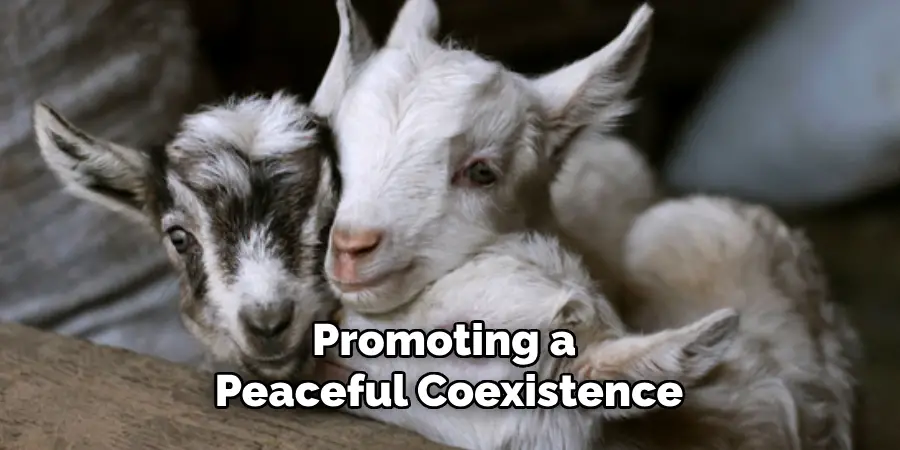
C. Provide Enrichment Activities
Offering enrichment activities such as climbing structures, toys, or brushing stations can significantly promote engagement and reduce signs of boredom or aggression among goats. Enrichment items encourage natural exploratory behaviors and provide mental stimulation, which can lead to more peaceful interactions among herd members.
Climbing structures cater to goats’ instinctual love of heights, offering them a sense of security and a vantage point to survey their surroundings. Toys like balls or hanging objects provide physical exercise and mental engagement. Brushing stations strategically placed within the enclosure allow goats to self-groom, reducing the need for dominance displays over-grooming services. Regularly rotating these activities helps maintain interest and prevents the onset of monotony, supporting a dynamic and harmonious environment.
Implementing these strategies encourages positive social interactions within a goat herd, significantly enhancing the well-being and overall mood of the goats. By focusing on gradual integration, grouping compatibility, and enrichment activities, goat keepers can foster a cohesive and content herd.
Minimize Stressors
Minimizing stress within a goat herd is crucial for maintaining a peaceful and healthy environment. Stress can lead to various negative behaviors, including increased aggression and competition among goats. Implementing specific measures to reduce these stressors can greatly enhance the overall well-being of the herd.
A. Maintain Routine
Establishing consistent feeding, milking, and handling routines helps to reduce anxiety and uncertainty among goats. Goats are creatures of habit and thrive on predictability. When they know what to expect daily, they are less likely to feel stressed.
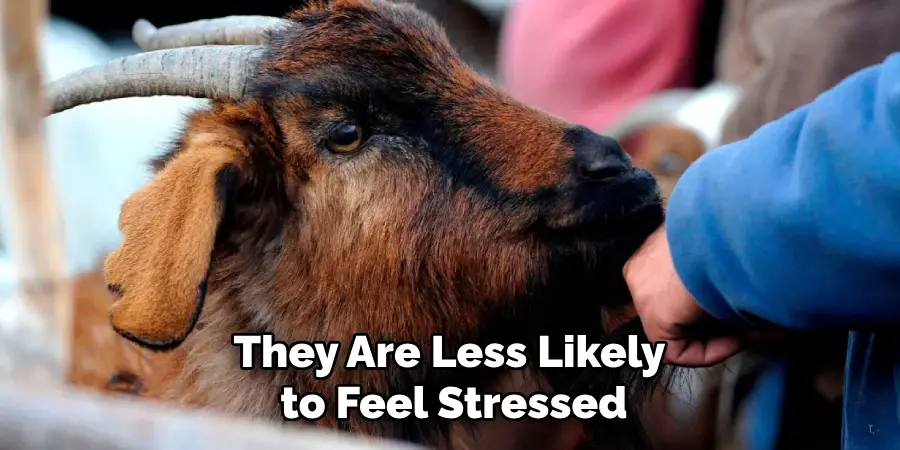
This consistency in routine not only aids in managing the goats’ expectations but also facilitates smoother operations within the herd. Adhering to a set schedule for feeding and milking eliminates confusion and competition, while predictable handling reduces the stress associated with human interaction.
B. Provide Adequate Rest and Shade
Ensuring that goats have access to rest areas and sufficient shade, especially during hot weather conditions, is essential for minimizing stress. Areas that provide protection from the sun and heat help prevent heat stress, which can be a significant source of discomfort for goats. Additionally, having designated areas for rest allows goats to relax and recover, reducing the likelihood of stress-induced aggression towards herd mates.
C. Address Health Issues Promptly
Closely monitoring goat health and addressing any medical concerns or injuries promptly is vital in preventing the aggravation of aggressive behavior. Unaddressed health issues can be a significant source of stress for goats, leading to restlessness and irritability.
By ensuring that medical care is provided quickly, the well-being of the affected goat is improved, and the overall harmony within the herd is maintained. Regular health checks and immediate attention to any signs of illness or injury can significantly contribute to a stress-reduced environment for the entire herd.
Implement Behavioral Training
Implementing behavioral training within a goat herd can significantly influence its social dynamics and overall well-being. Various training techniques encourage desirable behavior while minimizing incidents of aggression or bullying.
A. Positive Reinforcement
Employing positive reinforcement techniques, such as clicker training or treat rewards, effectively promotes desired behaviors among goats. This method involves rewarding goats immediately after they exhibit a positive behavior, reinforcing that action and making it more likely to be repeated in the future.
For instance, rewarding goats with a treat or a clicker sound followed by a reward when they calmly approach or interact with herd mates can encourage more peaceful interactions. Positive reinforcement strengthens desirable behaviors and helps discourage bullying by associating negative behaviors with the absence of rewards.
B. Redirect Aggressive Behavior
Aggressive behavior among goats can be managed by interrupting and redirecting these interactions toward more positive outcomes. Utilizing verbal cues or gentle physical interventions can effectively halt aggressive behavior before it escalates. For example, if two goats begin to butt heads, a firm “no” or clapping to capture their attention, followed by guiding them to separate activities, can prevent the situation from worsening.
Over time, goats can learn to associate these cues with the cessation of aggressive behavior, promoting a more harmonious herd environment.
C. Consistency and Patience
The key to successful behavioral training lies in consistency and patience. Applying training techniques consistently ensures that goats understand what is expected of them, helping to solidify new behaviors. It’s important to maintain patience throughout the training process, as goats, like any animal, require time to learn and adapt to new behavioral expectations.
Regular, patient training sessions enhance goats’ learning experience and strengthen the bond between goats and their keepers, contributing to a more respectful and cooperative environment.
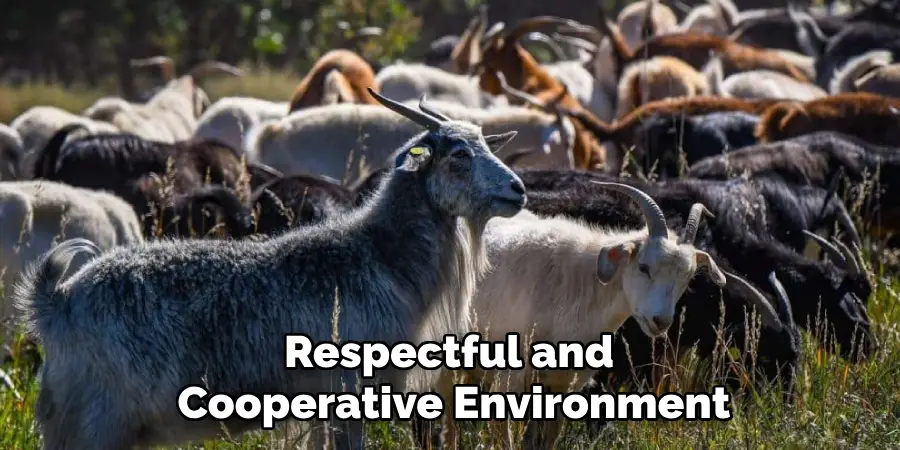
Frequently Asked Questions
How Often Should Goats Be Fed?
Goats should be fed twice a day to maintain a consistent feeding routine. To ensure their nutritional needs are met, a balanced diet consisting of forage, grains, and access to fresh water is essential.
What Are the Common Signs of Stress in Goats?
Common signs of stress in goats include excessive vocalization, pacing, decreased appetite, aggressive behavior towards other goats or humans, and increased hiding or isolation. Monitoring these signs closely is crucial to maintain a healthy and stress-free environment.
Can Goats Be Trained to Respond to Their Names?
Yes, goats can be trained to respond to their names through positive reinforcement techniques. Consistently calling their name before offering a treat or meal can help them associate their name with positive experiences, encouraging them to come when called.
How Can I Introduce New Goats to An Existing Herd?
When introducing new goats to an existing herd, it’s important to do so gradually. Start by keeping the new goats in a separate but adjacent area where they can see and smell each other without direct contact. This allows both groups to become acquainted without immediate confrontation. Slowly allow supervised interactions until you observe peaceful cohabitation, gradually increasing their time together.
What Should I Do if I Notice Aggressive Behavior in My Goat Herd?
If you notice aggressive behavior, first ensure that the basic needs of all goats are met, including access to food, water, and shelter. Address any potential health issues that may be causing discomfort or stress. Employ behavioral training techniques to redirect aggressive behavior and reinforce positive interactions. Consult with a veterinarian or an animal behavior specialist if the aggression persists despite these measures.
How Important Is It to Provide Toys and Environmental Enrichment for Goats?
Providing toys and environmental enrichment is very important for goats. It stimulates their minds, reduces boredom, and can decrease instances of undesirable behaviors. Enrichment can include items like balls, climbing structures, and puzzles that dispense treats. These activities encourage natural behaviors and promote physical and mental well-being.
Conclusion
In conclusion, addressing how to stop goats bullying within a herd requires implementing comprehensive strategies and techniques to foster positive interactions and reduce stressors. From gradual integration and group compatibility to enrichment activities and routine maintenance, each measure plays a pivotal role in creating a cohesive herd.
Behavioral training, employing positive reinforcement, and redirecting aggressive behavior are key to encouraging desired interactions among goats. Goat keepers must underscore the importance of creating a positive and respectful social environment, prioritizing the well-being and harmony of the herd.
By applying these methods consistently, you can promote lasting peace and foster a community where each goat can thrive. Wishing you success in promoting harmony and well-being among your goat community!
About
Outdoor Fixes is a distinguished figure in the world of Diy design, with a decade of expertise creating innovative and sustainable Diy solutions.
His professional focus lies in merging traditional craftsmanship with modern manufacturing techniques,
fostering designs that are both practical and environmentally conscious. As the author of diy,
outdoorfixes delves into the art and science of outdoorfixes-making, inspiring artisans and industry professionals alike.
Education RMIT University
(Melbourne, Australia) Associate Degree in Design (Outdoor Fixes) Focus on sustainable design, industry-driven projects,
and practical craftsmanship. Gained hands-on experience with traditional and digital manufacturing tools, such as CAD and CNC software.
Nottingham Trent University
(United Kingdom) Bachelor’s in outdoorfixes.com and Product Design (Honors) Specialized in product design with a focus on blending creativity with production
techniques. Participated in industry projects, working with companies like John Lewis and Vitsoe to gain real-world insights.
Publications and Impact
In diy, Outdoor Fixes his insights on indoor design processes, materials, and strategies for efficient production.
His writing bridges the gap between artisan knowledge and modern industry needs, making it a must-read for both budding designers and seasoned professionals.

